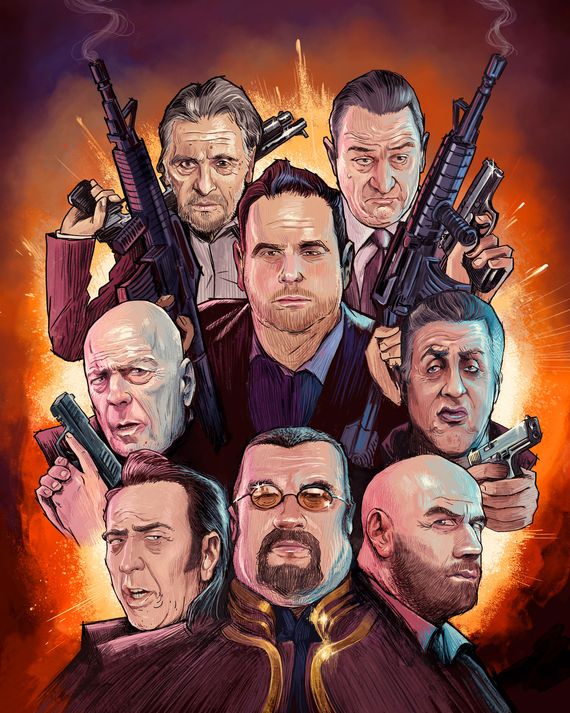
This article was featured in One Great Story, New York’s reading recommendation newsletter. Sign up here to get it nightly.
On Wednesday, January 13, Randall Emmett presided over a crime scene near one of America’s few tropical rain forests in Trujillo Alto, Puerto Rico. Robert De Niro, dressed as a small-town Georgia sheriff, emerged from a sun-faded mobile home and walked solemnly past a black van marked CORONER, looking like a man uneasy about the ordeal ahead of him. In Wash Me in the River, the feature film Emmett had just started shooting, that ordeal was to pursue a recovering opioid addict exacting revenge on the drug dealers he holds responsible for his fiancée’s death. Off-camera, De Niro’s ordeal was no less daunting — somehow, the great actor had to keep Hollywood’s worst filmmaker from ruining the movie they’d set out to make together.
Emmett, who is 50, has directed just one other film, which has yet to be released. But as a producer, his credits include more than 110 movies, which have grossed in excess of $1.2 billion, most of them bad enough to require a category all their own. Among these, a few are impressively dreadful, like Neil LaBute’s 2006 remake of The Wicker Man, starring Nicholas Cage; others are the forgettable detritus of a bygone era, like the 2007 thriller 88 Minutes, which marked a low point for both Al Pacino’s acting career and the use of cell phones as a plot device; most, however, are cheap paint-by-numbers action flicks such as Survive the Night, with Bruce Willis; Mercenary for Justice, starring Steven Seagal; and Backtrace, which brought Sylvester Stallone and Matthew Modine together for one of cinema’s more improbable partnerships.
Such a bleak filmography would seem an unlikely lure for collaborators like De Niro and John Malkovich, who also appears in Wash Me in the River. But over a career spanning more than two decades, Emmett has made a fortune producing bad movies; that he has done so while pissing off investors, directors, and screenwriters — and, arguably, misleading audiences — hardly matters in Hollywood, where feature films have become increasingly difficult to finance and box-office receipts recently approached a 40-year low. There’s a crude, blunt brilliance to Emmett’s filmmaking formula: Accept money from just about anyone willing to hand it over, offer vast sums of it to an aging star for a day or two of work, then leverage that actor’s name to presell the movie in foreign markets. Along the way, forgo union writers and directors whenever possible, keep shooting days to a minimum, and film on location in places like Puerto Rico, where the local government offers filmmakers tax credits that can be sold on the open market for 90 cents on the dollar. Ugliness, after all, is excusable in Hollywood, where Harvey Weinstein was sheltered for decades by his power and ability to make people money; in Weinstein’s absence, it remains the kind of town where even auteurs like Martin Scorsese will rub elbows with Emmett, producer of Private Valentine: Blonde & Dangerous, as long as it helps them get a movie made.
“He begged Marty for a script that he couldn’t get financed so that he could finance it for him,” a producer who has worked with Emmett told me. That film turned out to be Silence, which had languished in development for decades before Emmett helped Scorsese find some of the money that finally got it made.
Emmett leveraged his deal with Scorsese to earn a non-PGA producer credit for The Irishman, but it did not earn him the respect of his peers. For those old enough to remember his early days in Hollywood, Emmett is still Mark Wahlberg’s former personal assistant, the hard-partying hanger-on who helped inspire the character Turtle on HBO’s Entourage. Younger generations know him as a minor character on Vanderpump Rules, the reality-television program on which he occasionally appears alongside his 30-year-old fiancée, Lauren “Lala” Burningham. Broad expanses of his own industry now view him with suspicion, including unions like the Writers Guild of America-West, which has placed his production company, Emmett/Furla/Oasis, or EFO Films, on its strike list, citing its failure to comply with an arbitration award amounting to $524,367.31 (after interest). Six other residuals claims against the company are pending, according to Neal Sacharow, director of communications for the WGA. “Given that EFO has not been reliable or financially responsible with their WGA payment obligations, the WGA would require significant financial assurances, including the posting of a substantial bond, as part of any renegotiation to sign on to the 2020 Minimum Basic Agreement,” Sacharow says. (EFO’s attorney, Rebecca Kaufman, says that EFO intends to settle the matter.)
Even Emmett’s own partners — Dubai-based Oasis Ventures Entertainment, the O in EFO Films — have accused him in a lawsuit of attempting to “steal assets,” including the rights to films like Escape Plan 3, alleging that he failed to consult them on dealings related to MoviePass Films, a co-venture with the now-bankrupt subscription-based ticketing service that produced a handful of films, including Gotti, a biopic starring John Travolta that is one of only a few movies ever to hold an approval rating of 0 percent on the website Rotten Tomatoes.
In January, such embarrassments couldn’t have seemed farther away. Emmett, dressed in shorts and a navy V-neck T-shirt, with a baby-blue surgical mask covering his face, had the sun at his back and an enviable cast at his disposal: Alongside De Niro and Malkovich, the film would feature Jack Huston — grandson of John, nephew of Anjelica — best known for his portrayal of a disfigured hit man on HBO’s Boardwalk Empire. Emmett also had the benefit of a straightforward, somewhat timely script and a much larger budget than many of the directors he has financed; EFO productions are often shot in two weeks or less, but Emmett had a month to film Wash Me in the River, and after making a hundred bad movies, he seemed to finally have an interest in making something worth watching.
For decades, Scorsese’s approach to balancing personal expression and commercial imperatives in Hollywood has been associated with six words the director may never have actually used himself: “One for them, one for me.” And while commercial pictures like The Color of Money and GoodFellas may have earned him the right to make Kundun and The Last Temptation of Christ, these days, that formula is outdated, a luxury even for someone like Scorsese. It’s Emmett’s career that is a better indication of Hollywood’s current math. Instead of “one for them,” a single good movie exists on the backs of massive comic-book franchises and an endless well of cheap, schlocky action flicks bad enough to make Michael Bay seem like David Lean.
The Randall Emmett Canon: A selection of his more than 110 producing credits.
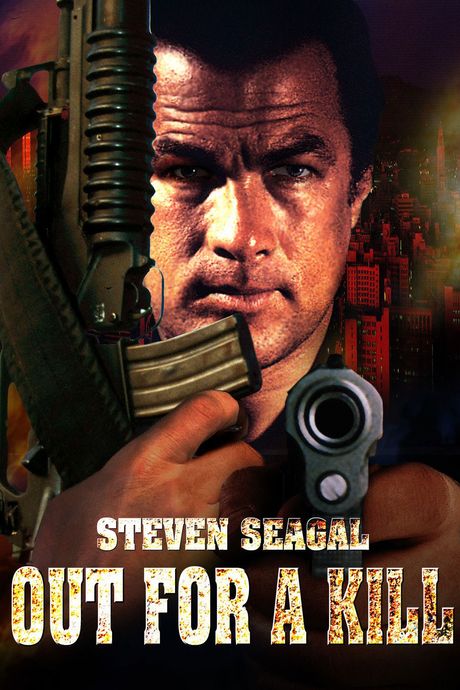
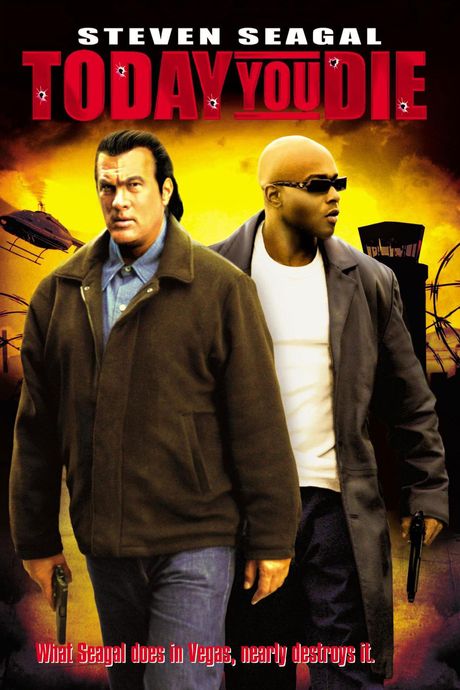
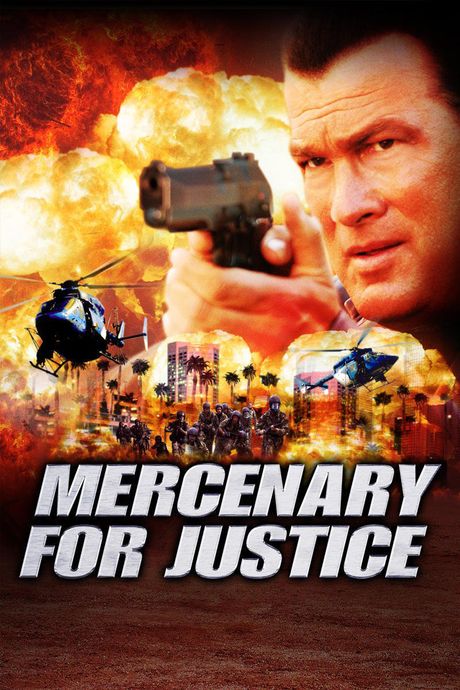
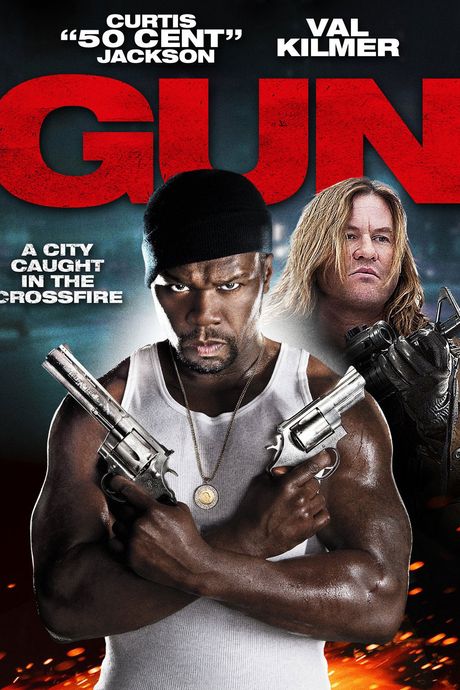
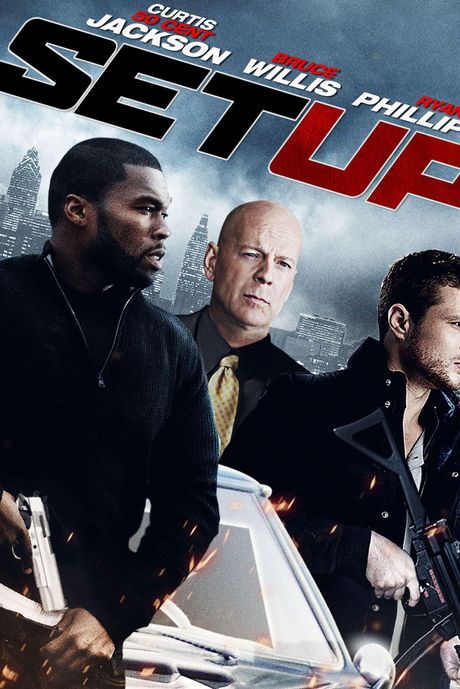
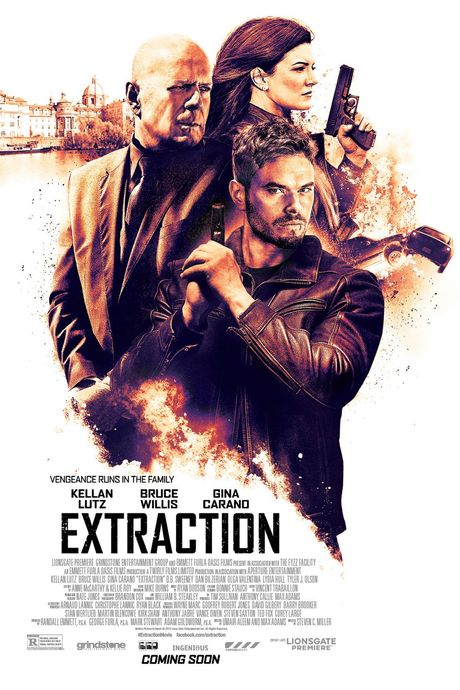
I first heard of Emmett last September, while speaking with Adam Champ, an executive at Daro Film Distribution in Monaco. From his office in Côte d’Azur’s sun-drenched tax haven, Champ explained an inglorious but profitable slice of the film industry that is built around a certain category of actor — the kind of action stars and leading men who once ruled Hollywood and now make very good money appearing in very bad movies, most of them relegated to streaming services, video on demand (VOD), and late-night television in Europe and South America.
Among these actors are John Travolta, Nicolas Cage, and Sylvester Stallone. But perched atop the ignominious heap is Bruce Willis, whose prolific partnership with EFO Films, one of the biggest players in this niche of the industry, results in as many as four or five movies each year.
“With Bruce Willis, there’s almost a model for how he features in these movies,” Champ theorized. “One of my clients calls it a ‘geezer teaser’: You have Bruce Willis at the intro of the movie, so people are like, Great, this is a Bruce Willis movie. But he’s actually a secondary character who shows up sporadically.”
In most of Willis’s movies for EFO, “sporadic” would be a generous appraisal of his presence. The actor clocks just seven minutes of screen time in Hard Kill, and in Extraction, he spends less than nine minutes onscreen. In the home-invasion thriller Survive the Night, audiences get almost ten minutes out of the actor, even if they aren’t his best.
The audience being teased by these brief performances seems to consist largely of men older than 35 who spent their teen years renting Jean-Claude Van Damme movies from their local video stores. In that era, as Bertrand Reignier, another Daro Films executive, puts it, action stars like Seagal and Van Damme made relatively cheap movies “with nothing to sell them except for the artwork on the box and maybe an action-packed trailer.” This demographic has now helped fuel the multibillion-dollar VOD market, a virtual replica of a Blockbuster Video.
The halcyon days Reignier describes were dominated by a company called the Cannon Group. When it was acquired by Menahem Golan and Yoram Globus in 1979, Cannon was a debt-ridden indie studio known for English-language versions of Swedish soft-core porn films. But in just a few short years, these Israeli cousins transformed the studio into a “mini-major” by tapping into America’s insatiable appetite for B-movies like Enter the Ninja and Cobra and producing an endless string of sequels to hits like Death Wish, The Delta Force, and The Texas Chainsaw Massacre. By the mid-’80s, Cannon was doing business with Avi Lerner, owner of South Africa’s Nu Metro movie-theater chain. Lerner had started his own film-production company, called Nu Metro Entertainment, to meet the local needs of studios. He served as a producer on Cannon films such as American Ninja 3: Blood Hunt and River of Death. By 1992, Lerner, who is also Israeli, had moved to L.A. and started producing his own low-budget films, specializing in direct-to-video “mockbusters” like Freefall (meant to capitalize on the success of Stallone’s Cliffhanger) and made-for-television creature features like Shark Attack.
“He was obsessed with shark movies,” filmmaker Michael Oblowitz says of Lerner. “Like low-budget versions of Spielberg movies but with no-name actors. He was really bottom of the barrel when it came to what was being made in Hollywood, but he had a lot of money. He’s very, very astute.”
Lerner’s ultimate ambition was to bring Hollywood’s biggest action stars to eastern Europe, where he was pioneering the practice of shooting American movies for pennies on the dollar in post-Soviet countries. Eventually, Lerner would realize this dream by producing The Expendables 2 and London Has Fallen. But back in 2002, big action stars like Stallone, Schwarzenegger, and Seagal remained skeptical of the producer, who had by that time set up a new production company called Millennium Films. To court them, Lerner relied, in part, on Randall Emmett, whose determination had impressed him.
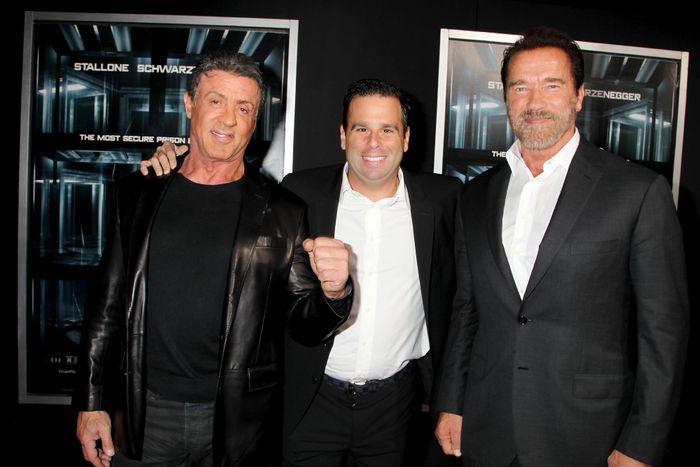
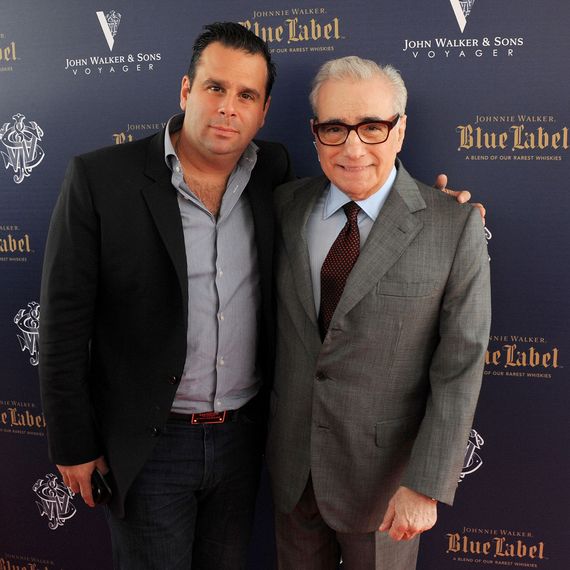
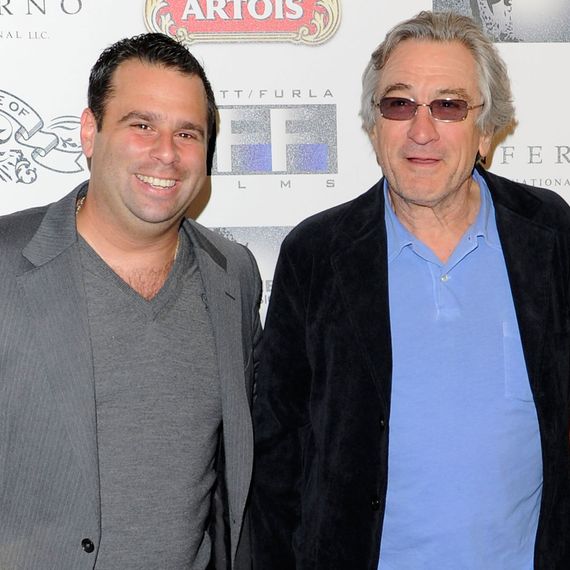
“If you throw Randy out the door, he comes in the window,” Lerner told the Los Angeles Times in 2012. “If you throw him from the window, he comes down the chimney.”
Emmett grew up in Miami, studied at the School of Visual Arts in Manhattan, and in 1996, moved to Los Angeles, where he landed an internship with producer Jerry Bruckheimer. He found a job as an assistant at International Creative Management, where he worked for a short while before a friend introduced him to Wahlberg, who asked Emmett to come work as his personal assistant.
“We spent every minute together,” Emmett recalled on the podcast Behind the Velvet Rope. “So I took a job with him and we traveled the world.” For two years, whenever Emmett told his boss he wanted to be a producer, Wahlberg said, “Good, then produce me a drink!” In the late 1990s, Emmett met George Furla, a wealthy ex–hedge-fund manager, who agreed to bankroll his vision. Lerner, meanwhile, gave Emmett a crash course in getting movies made by any means necessary. It was a mutually beneficial relationship. Even low-budget action flicks cost upwards of $10 million in those days, putting them beyond the reach of Emmett and Furla, who instead signed on as co-financiers on several Millennium Films productions. And while Emmett benefited from Lerner’s mentorship, the fledgling producer’s youth and ambition were an asset to Lerner, especially when it came to courting Seagal, who had just made a film with Oblowitz.
Oblowitz was, by his own reckoning, an unlikely candidate for directing commercial action movies. After dodging the draft in his native South Africa, Oblowitz moved to New York, where he became a seminal figure in the No Wave movement of the late ’70s and early ’80s, creating films now in the permanent collection of the Museum of Modern Art. While earning an M.F.A. at Columbia University, he palled around with Jim Jarmusch and curated a program called “Cine Virus” alongside his friend Kathryn Bigelow. At the tail end of the indie-film craze of the ’90s, Oblowitz’s 1997 movie, This World, Then the Fireworks, was featured at Cannes, but he still paid the bills directing music videos. When the opportunity to work with Seagal came along, he was happy to make a living wage directing a feature film. Oblowitz also enjoyed the surreal perks that came with the job, such as working with crews who had helped make movies with Andrei Tarkovsky and Krzysztof Kieslowski. Then there was the time he dined with Seagal and Vladimir Putin in Warsaw. (A spokesperson for Seagal denied that he would ever have taken Oblowitz to dinner with Putin.)
Studio heads, meanwhile, appreciated the fact that Oblowitz could tolerate Seagal’s eccentricities. Once, Oblowitz says, Seagal halted production on The Foreigner so that Buddhist monks from Nepal could perform a ceremony to determine whether the production would go forward. The ceremony, called a puja, was held at Seagal’s sprawling mansion in Los Angeles, where he summoned Oblowitz and various producers, studio executives, agents, and managers.
“Millions had been spent just to get us to where we are, and now our superstar is informing us that the fate of the production a week out from beginning is going to be decided by a bunch of Buddhist monks in Seagal’s lounge in Mandeville Canyon,” Oblowitz says. “Now I’m really understanding the Seagal that everybody talks about and complains about, and Craig Emanuel [Seagal’s attorney] looks at me with this look of absolute fucking horror on his face, and I’m jet-lagged out of my brain, and on the wall is this gigantic velour painting.” In the painting, Seagal was seated on a gold throne in the Himalayas, surrounded by monks in purple robes — much like the ones gathered in front of the painting. “There are 15 of these Buddhist monks, all dressed in their purple robes and their shaved heads and their sandals, and they’ve just flown in from Tibet or somewhere on one of these 25-hour flights. After hours of chanting, Oblowitz says, the monks extinguished their burning sage and communicated something to Seagal, who then lit a cigar and declared that The Foreigner could resume production.
Another issue was Seagal’s insistence on extensive script rewrites, which often baffled his collaborators. “Steven decided he wanted to be an archaeologist, and I went, ‘Steven, please, please, you can’t be a fucking archaeologist. Nobody wants to see Steven Seagal: archaeologist,’ ” Oblowitz says. “I wanted to track down drug dealers and avenge your murdered wife — like a Sam Peckinpah or John Ford movie. But, you know, he wanted to show his sublime knowledge of Chinese antiquities.” (Seagal’s spokesperson called both stories “absolutely false.” Emanuel declined to comment.)
Such experiences, along with a shared love of blues music, bonded the action star and his director, Oblowitz says. When Emmett reached out with a proposal for a direct-to-video Seagal picture with Millennium Films, Emmett’s pitch, Oblowitz recalls, was that Seagal would love working in Bulgaria, “where the girls are so pretty, and we know all the model agents.” (Kaufman denied this happened but did acknowledge that Furla, Emmett’s partner, was once an investor in a modeling agency.) However clumsy his approach, Emmett’s timing was excellent: Franchise Pictures, which had bankrolled The Foreigner, was the target of a federal criminal investigation by the time Oblowitz began editing the film; Elie Samaha, who ran Franchise, was eventually found liable for $77 million in damages for inflating the budgets of films including the Scientology sci-fi epic Battlefield Earth. (He ended up filing for bankruptcy protection.) Oblowitz and Seagal agreed to let Emmett and Lerner produce their next project.
That film was Out for a Kill. It was pivotal for many reasons: For Lerner, it was the realization of his dream to bring big-name stars to Eastern Europe, where explosions, helicopter rentals, and labor were all cheaper and $20 million could be made to look like $40 million. For Emmett, it was a proving ground.
“I invented the formula,” Oblowitz says. “What I did with Steven with The Foreigner and Out for a Kill was the formula that everybody uses today to get an aging, overweight action star in and out as fast as possible, and it created a template whereby you can cut him through the movie.” It was, for Oblowitz, a formula born of necessity: Seagal still had box-office clout, and if he wanted to show up to work late, leave early, and spend less time shooting action sequences, Oblowitz would have no choice but to accommodate him, which meant extensive storyboarding, creative fight coordinators, and strategic use of stunt doubles. “That model is now being used with all these aging action stars,” Oblowitz says. “All these guys — Bruce Willis, Mel Gibson — they’re all doing what Seagal did.”
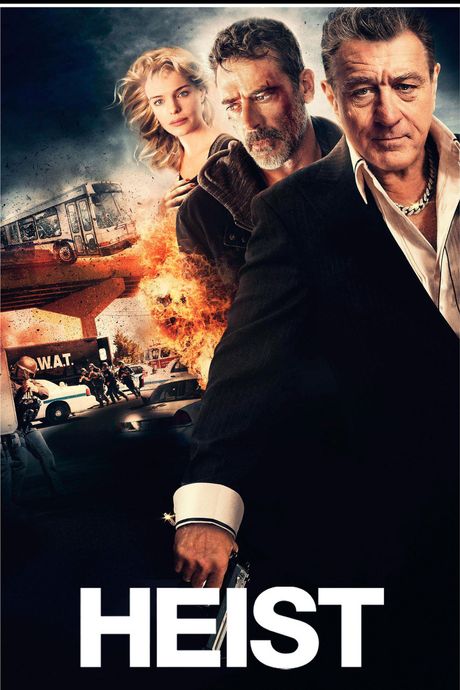
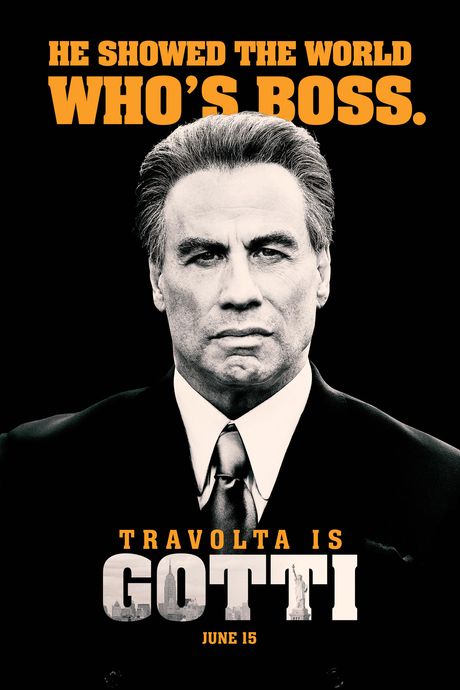
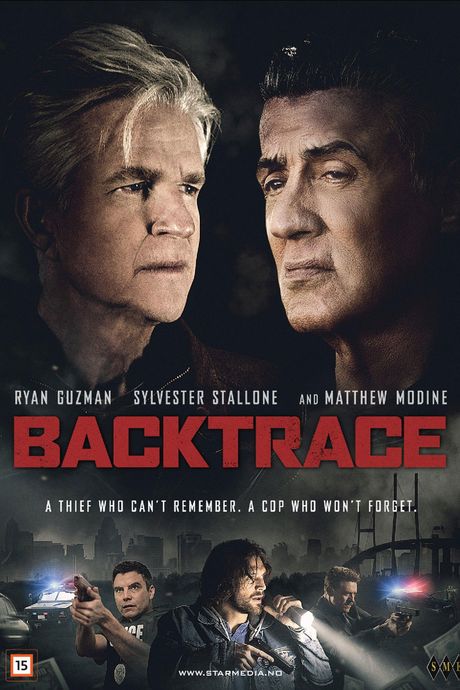

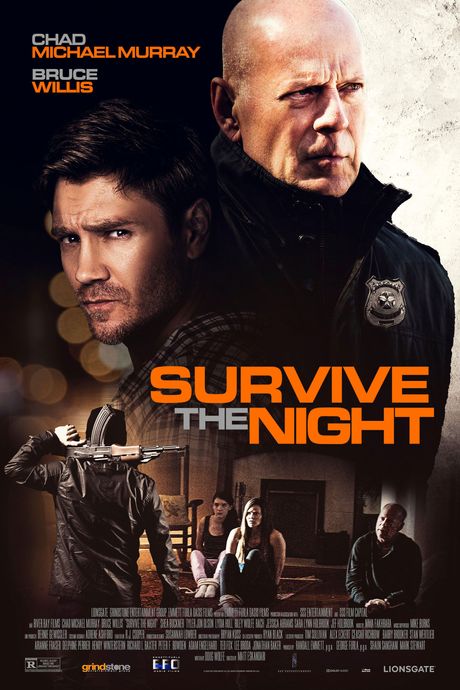
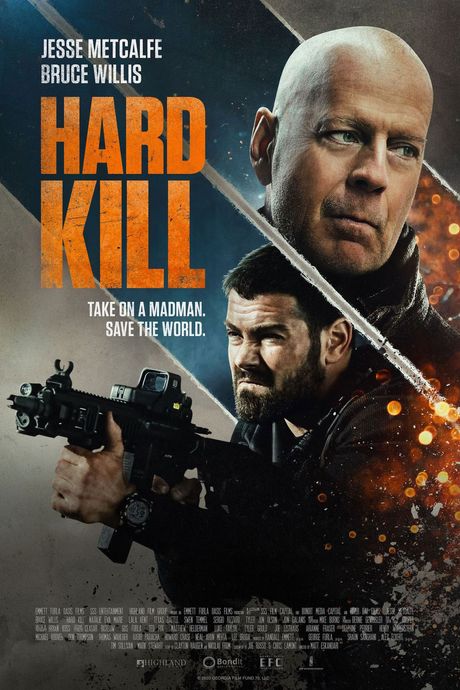
It took two decades for major studios like Sony and Universal to learn what Golan and Globus had already known when they took over the Cannon Group: Sequels needn’t be bigger, better, or even very good in order to rake in profits. Instead of burying franchises like American Pie as ticket sales plummeted, studios could churn out cut-rate spinoffs and sequels on the direct-to-DVD market, where a $10 million investment could reliably bring in $20 million or more. The major studios eventually joined smaller ones like Millennium in releasing increasingly cheap direct-to-DVD action films, many of them shot overseas. By 2008, these movies generated $3 billion annually.
One longtime executive at Creative Artists Agency says more big movies got made during those years because the profitability of DVDs served as a backstop for just about everything the studios did. “As that source of revenue for the studios went away with the DVD market — and it has not been replaced by any of the digital stuff — the studios spent less and less outside of the big tentpole films,” the executive says. “This left a big hole in the market.”
After the success of Out for a Kill, Seagal sometimes made four or five direct-to-DVD movies in a single year. But when the DVD market collapsed, budgets got smaller and margins slimmer, and major Hollywood studios had less appetite for such films. That, in turn, meant more opportunities for small upstarts. Emmett and Furla took advantage of some of those opportunities in 2010, when they produced three pictures, including Gun, starring Curtis “50 Cent” Jackson. Then came an unusual investment: In March 2011, Emmett secured $525 million from Remington Chase and Stepan Martirosyan, whom the Los Angeles Times once described as having made their fortunes in the oil business in Russia. Their interests, however, were diversified. Both men had convictions related to cocaine trafficking, and the Securities and Exchange Commission later charged Chase with fraudulently raising $62 million for motion-picture enterprises, then spending the majority of that money on personal expenses and other ventures; Chase settled, agreeing to pay over $10 million without admitting any wrongdoing.
“The thing around Hollywood that a lot of people say is it’s a surprise Randall hasn’t been killed by Russians or something, knowing the kind of money he deals with,” the producer who has worked with Emmett says. Neither Emmett nor EFO films has been accused of any criminal violations in connection with the financing of his movies. Still, he says, “the number of people who share that line, like, ‘I’m shocked Randall is still alive,’ you just wouldn’t believe it.”
It’s not so far-fetched to imagine a bit of dark money passing through Hollywood: In 2013, a grand jury indicted Christopher Eberts, producer of the Nicolas Cage film Lord of War, on federal wire-fraud and money-laundering charges. He pleaded guilty and was sentenced to nearly four years in federal prison. More recently, the SEC accused Guy Griffithe of defrauding investors of nearly $4.85 million by selling fictitious interests in a legal marijuana business; Griffithe, who along with Emmett is credited as a producer on Speed Kills, starring John Travolta, was accused in the complaint of using his investors’ money on “unrelated business ventures, including Bridgegate Pictures Corp. and other of Griffithe’s undertakings in the movie industry.” (In February, Griffithe settled with the SEC without admitting any wrongdoing. Both Emmett and Griffithe claim they have never worked together.)
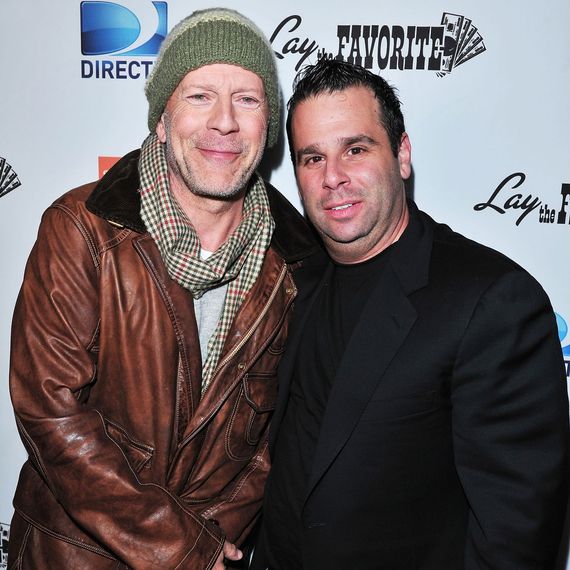
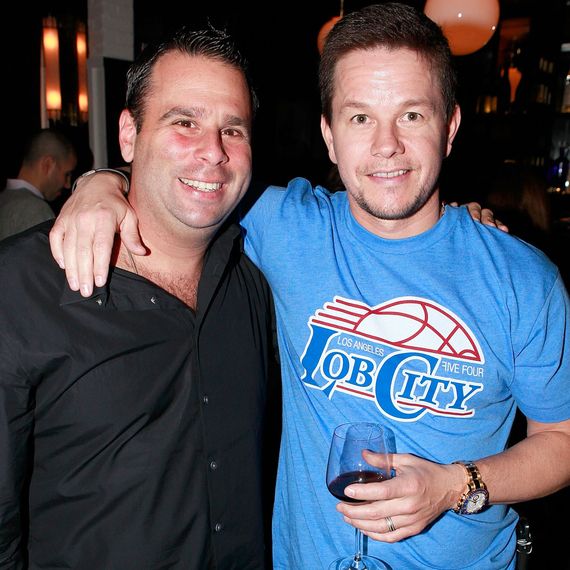
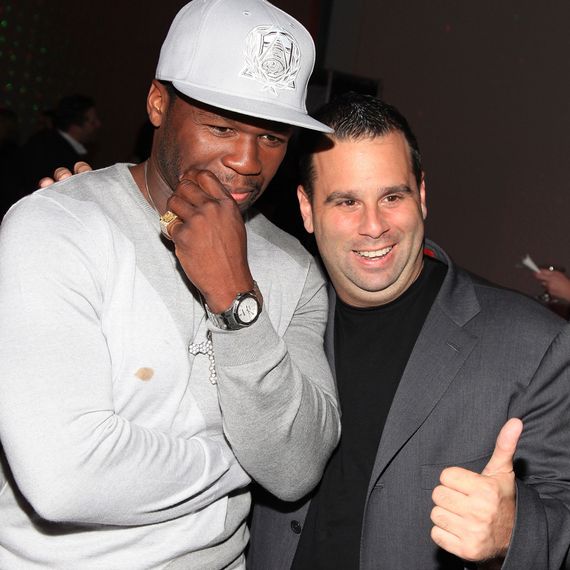
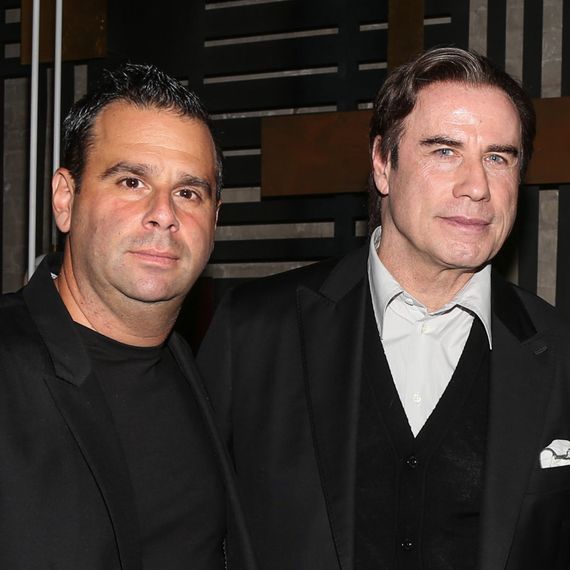
Emmett’s instincts for creative financing have been key to his success. Funding that is not tied to film rights, tax credits, or presales is “superhard money to find,” the producer who has worked with Emmett told me, and it often comes from people who have been successful in other industries and want to take part in “the glamour of the film industry.” For Emmett and his partners, these investments are everything — fast, liquid cash that, while it often amounts to less than 10 percent of the overall budget, can be crucial to ensuring a movie actually gets made.
This money sometimes comes from unusual benefactors. Dan Bilzerian, the social-media influencer who spun his trust fund into celebrity as a gun-toting, poker-playing, bikini-clad-model-dating Instagram star, sued EFO in 2013, saying it failed to give him the full eight minutes of screen time he’d been promised in exchange for his $1 million investment in the film Lone Survivor. Bilzerian eventually dropped the suit and, in 2015, appeared in Extraction, an EFO production starring Willis.
Emmett produced Lone Survivor, a Wahlberg blockbuster, with his Russian money, and it was something of a prestige film for EFO. Around this time, he also made Setup, which paired 50 Cent with Willis in one of his many geezer teasers. For Willis, the appeal seems clear: lots of money for very little work. But 50 Cent had much more invested in the project, which grew out of his own production company, Cheetah Vision, where Emmett worked as president for a time. In 2013, Oasis Ventures gave EFO another infusion of cash, and Emmett’s output picked up even as some of his investors and script writers said they struggled to get paid.
One of Emmett and Furla’s unhappy investors was Nemesis Finance, which sued them over its stake in the 2013 film Broken City. The lawsuit, which was later settled “amicably,” accused Emmett and Furla of misrepresenting their debts to investors so they could reduce the amount of cash reserves they were required to keep on hand for residual payments to writers, actors, and directors. These cash-flow problems were hardly mysterious: By 2014, Emmett was churning out bad movies at such an incredible rate that, according to one producer, executives at the distributor Lionsgate wondered whether the reliable margins the company made on EFO pictures were worth the tarnish to its overall brand.
“They were unhappy with the films they were getting from Randall’s slate,” says the producer. “I think it was kind of at a point where it was almost like an ax over the head of the output deal.” A spokesperson at Lionsgate said in an email that the film distributor has “had a long-standing, successful partnership with Emmett Furla Oasis Films which has been a reliable supplier of consistently profitable movies.” Lionsgate and EFO agreed to hire Scott Mann, a young indie filmmaker from England, to direct Heist, starring Robert De Niro, Jeffrey Dean Morgan, and Dave Bautista. In January, after seeing Heist on television, I called Mann to discuss his experience directing the film. He told me he felt pressure from Emmett to persuade De Niro to go forward despite some misgivings over the script. In the end, the two men discussed these issues and spent several days working on revisions at De Niro’s offices in Tribeca.
But as soon as Mann overcame one obstacle, Emmett threw another in his way. After more intensive rewrites, the director was told that his shooting schedule would be cut from 25 days to 20. By the time filming got under way in Mobile, Alabama, in September 2014, Emmett had cut it to 17.
Emmett’s meddling is apparent in the finished product, as are Mann’s efforts to save his film from becoming just another EFO production. In her 2015 review of Heist for the New York Times, Jeannette Catsoulis immediately seized on this tension: “Whatever its flaws, Heist is to be commended for repeatedly finding ways to distract us from them,” she wrote. “Battling a preposterous plot and second-tier performances that are, at best, serviceable, this roll-along thriller from Scott Mann works its keister off to turn beef jerky into chateaubriand.”
Despite its flaws, Heist was much better than distributors had come to expect from EFO, and it helped keep Emmett’s output deal alive. The geezer teasers kept coming, along with the lawsuits: In 2017, EFO was sued by Jonathan Baker, a co-producer of the Nicolas Cage film Inconceivable, who alleged that Emmett and Furla paid themselves $650,000 more in producer fees than had been agreed upon and failed to disclose it; in 2019, Oasis Ventures sued Emmett and Furla over the MoviePass partnership; and Boies/Schiller Film Group sued them for breach of contract over its $6 million investment in the movie Escape Plan, starring Stallone and Schwarzenegger. (Kaufman says Boies/Schiller dismissed the complaint, and Furla called the Baker suit “disgusting, frivolous, and without merit.”)
Emmett, in the meantime, went through a divorce that was finalized in 2017 — his now ex-wife, Ambyr Childers, portrayed Candace Stone on the Netflix series You — and started dating Lala from Vanderpump Rules, on which he began appearing in early 2020. In the social-media world, his former partner 50 Cent complained repeatedly on Instagram that Emmett owed him $1 million; more than one of the rapper’s digs revolved around what seemed to be the transactional relationship between Emmett and his fiancée, who revealed on Vanderpump Rules that he had bought her a Range Rover after she slept with him on their first date.
Career-wise, Emmett was aspiring to new things. As a producer, he felt he’d been on autopilot, telling Deadline Hollywood that he “was kind of dying, creatively.” To shake himself out of his rut, he decided to direct his first feature film. In March 2020, Emmett went to Puerto Rico to start shooting Midnight in the Switchgrass, for which he’d called in a favor to secure the services of Willis, who starred alongside actors Emile Hirsch, Megan Fox, and Colson “Machine Gun Kelly” Baker. But production was halted just a week after it started by the COVID-19 pandemic, and for a while, it seemed like nothing might come of the project aside from the tabloid-fodder romance between Fox and Baker. Eventually, Emmett was able to return to Puerto Rico and finish filming.
The experience, it seems, did not deepen his sympathy for his directors. In October 2020, not long after wrapping his directorial debut, Emmett sent his longtime music supervisor, Mike Burns, to Puerto Rico to start shooting his own first movie, Out of Death, also starring Willis. The first week of shooting was eaten up while COVID-19 safety protocols were still being fine-tuned. Some days, the cast would get the all clear while members of the makeup or costuming department remained sidelined, making it impossible for Willis to transform into forest ranger Jack Harris, who comes to the aid of a witness to a murder during a hiking excursion.
When the stars at last aligned and filming commenced, Burns was left with just nine days to shoot, an impossible feat for even a seasoned director. Equally challenging: Willis, who was originally slated for two days of filming, had a “hard out,” which meant that all his scenes would need to be shot in a single day. “We already had such limited time with Bruce, and our time with him was cut in half,” Burns told me. “And that meant that we had to actually start cutting themes and rejiggering things.” On set, Willis looked very much at ease with the situation. Dressed in gray work pants and a white undershirt, he spent time between shots lounging in the shade with a portable electric fan.
“This was trial by fire,” Burns says. Others might call that an understatement. “There is a bullying kind of exploitative nature to some of the directors involved in the Bruce Willis movies,” says the producer who has worked with Emmett. “Days keep getting cut down to such an extreme extent that there’s no way to make a good movie, and ultimately that’s going to fall on the director and the talent involved.” Still, several directors have chosen to work on more than one EFO film.
Willis, curiously, has remained somewhat insulated from the box-office consequences of his run of EFO films — partly, it seems, because of how they are distributed, and partly because of how singular his career’s peak was. Willis, like Stallone and Seagal, rose to fame when it was still possible for an action star to be a lasting icon. “The gatekeeping was a lot stronger than it is now,” Oblowitz says. “The money made by these movies was a lot more. There wasn’t Jason Statham and Gerard Butler, and, you know, Liam Neeson wasn’t doing action movies. There just wasn’t this panoply of action stars.”
In January 2021, when Emmett returned to Puerto Rico to shoot his second feature as a director, Wash Me in the River, he seemed to have everything going for him — a stellar cast, a decent budget, and a generous shooting schedule. Despite these ideal conditions, the production appeared to be heading down a familiar path. Emmett was, for example, still on the outs with the WGA, which in late November sent its members a letter advising against working with him and Furla, who were on its strike list.
Then there is the casting of ancillary roles. De Niro’s deputy sheriff was played by Meadow Williams, the 55-year-old widow of Nature Plus vitamin mogul Gerald Kessler, who died at age 80 in 2015, leaving her $800 million — a fortune that enabled her to invest in films and further her career as an actress. Her 29-year-old boyfriend, Swen Temmel, an EFO films mainstay, plays a cornrowed criminal. Grant Cardone, a real-estate mogul and motivational speaker, is also in the film; he plays an EMT. From the set, Cardone posted short videos to his Instagram Stories between calls for “accredited investors with more than $250,000” to spend on one of his real-estate deals.
Still, Emmett seemed eager to prove himself as a filmmaker. “As a producer, if the movie fails, it’s not always on me,” Emmett said on the Behind the Velvet Rope podcast last June. “It’s on the director, generally, and I’ve now crossed over to that world.” Midnight in the Switchgrass is slated to come out in July; Wash Me in the River will arrive next year, and so what he does in that world remains to be seen. But whatever the outcome, and however they are received by critics, it seems clear that Emmett will be able to live with the results. “When a movie doesn’t work on a critical level, like Gotti didn’t work,” Emmett said on the same podcast, “all you can say is, ‘Hey, they spent eight years trying to make the movie; I spent six months, and it happened.’ ”

